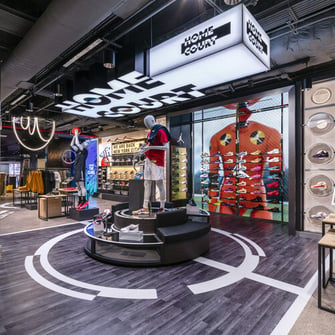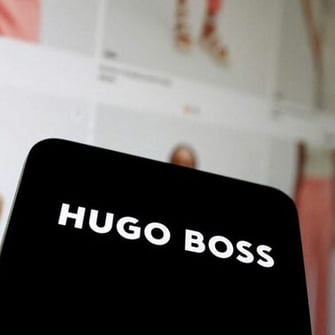Bloomberg
today Jul 9, 2024
Let Temu keep the cheap stuff. Amazon should go luxe
Bloomberg
today Jul 9, 2024
Over the past two weeks, Amazon.com Inc. has sought to make inroads in the selling of both bling and bargains. Only one move is wise. It has a better chance of competing with Tiffany & Co. than Temu.

Amazon will help facilitate a deal by Saks Fifth Avenue owner Hudson’s Bay Co. to acquire rival Neiman Marcus Group for $2.65 billion. The tech giant will take a minority stake in the resulting company, Saks Global, giving it access to the luxury sector.
The move comes just days after it emerged that Amazon plans to take on PDD Holdings Inc.’s Temu and Chinese fast-fashion rival SheIn Group Ltd. with a new storefront selling ultra-cheap goods.
Neither market will be easy to conquer. But even a behemoth like Amazon will struggle to beat Temu and Shein at their own game, and in the process, it risks devaluing what has become its core proposition: convenience.
And while it’s also unlikely that Amazon can outperform LVMH Moet Hennessy Louis Vuitton SE, owner of Tiffany and Dior, there may be potential to make inroads with other high-end players, given recent turmoil in online luxury fashion.
Let’s start with the discount endeavor. It’s certainly a reversal of the status quo. For the past 30 years, Amazon has been the challenger. Now the cheap Chinese shoe is on the other foot.
Consequently, Amazon is looking to ape the business models of Temu and Shein. That means shipping goods directly from China, rather than holding them in warehouses in the US, close to where its shoppers live and where it can offer its signature lightening-fast delivery. Shipping from China would be much slower — nine to 11 days — but would allow for lower prices. This is because Amazon would be able to take advantage of the same de minimis rule utilized by the Chinese retailers, which allows citizens in many countries to receive international parcels under a certain value without paying import tariffs. In the US, the threshold is $800 a parcel.
This would preserve Amazon’s everything-store status and keep cost-conscious shoppers within its ecosystem. But it also presents significant questions and challenges.
One is whether it would use the Chinese companies that already sell through its marketplace to fulfill these orders — or turn to new ones. Enlisting new Chinese factories is risky. Shein in particular has seen its supply base come under scrutiny. In widening its supplier net, Amazon could face similar questions.
Another drawback: It devalues Amazon’s Prime proposition. For the past 20 years, the company has sought to persuade shoppers to pay a fee — currently $139 a year — for access to its super-fast shipping. Introducing a slower option is effectively saying that convenience isn’t so valuable after all.
Meanwhile, selling $15 dresses on one part of Amazon looks at odds with selling $1,500 ones on another. And the Saks deal is the clearest indication yet that the company has not give up on the latter market.
Although Amazon, including its marketplace sales, is the US’s biggest clothing and footwear retailer according to research group GlobalData, it has long tried — and failed — to crack the top end.
The company launched Luxury Stores in the US in 2020, featuring designers including Oscar de la Renta and Altuzarra; it added pre-owned luxury and expanded to Europe two years later. Initially limited to Prime members, Luxury Stores is now open to all. Even with control over products and pricing, only a limited number of brands have signed up.
Big names such as Louis Vuitton, Kering SA’s Gucci and Prada SpA likely won’t ever sell on Amazon. Around the time Amazon was working on Luxury Stores, Benard Arnault, chief executive officer of LVMH, told analysts his brands would not be joining the platform.
The bling behemoths are increasingly reaching customers through their own boutiques and websites, one of the reasons why department stores, such as Saks and Neiman Marcus, as well as Macy’s Inc., which is facing an increased offer from an investor group, are trying to remain relevant.
But the deal with Saks provides Amazon with an alternative way into the roughly $400 billion global luxury market.
Marc Metrick, CEO of Saks Fifth Avenue’s online operations, told Bloomberg News that the tech company, as well as Salesforce Inc., which will also take a minority stake, would help “future-proof” the combined company.
Amazon will provide technology and logistics expertise, potentially making deliveries and returns slicker for Saks Global’s VIP customers. But closer cooperation with Luxury Stores can’t be ruled out. Either way, the move could lend more credibility to Amazon’s chichi efforts.
Timing is on its side. The US luxury market has been hit by comfortable — rather than super wealthy — consumers cutting back. This has particularly hurt e-commerce, as these shoppers tend to buy online. That shift helped bring about the sale of Farfetch Ltd. to South Korean e-commerce company Coupang Ltd. in December, and the collapse of Britain’s Matches Fashion in March. Cie Financiere Richemont SA’s Yoox Net-a-Porter is also up for sale. The implosion of the online market might make Amazon more appealing to smaller fashion houses that had previously sold through these channels.
Even with the drawbacks, going upmarket is a better option than a race to the bottom against Temu and Shein — particularly as Prime members, Amazon’s core market, tend to be more affluent.
And it’s not clear how long Shein and Temu will continue to gain market share. The latter’s explosive growth is already moderating. Any curbing of the de minimis rule may hasten the slowdown. On the other hand, the US luxury market has been transformed over the past five years, and won’t remain in the doldrums forever.
Demand for pricey purses is poised to endure. The same can’t necessarily be said for budget bags from China.
Copyright Bloomberg












